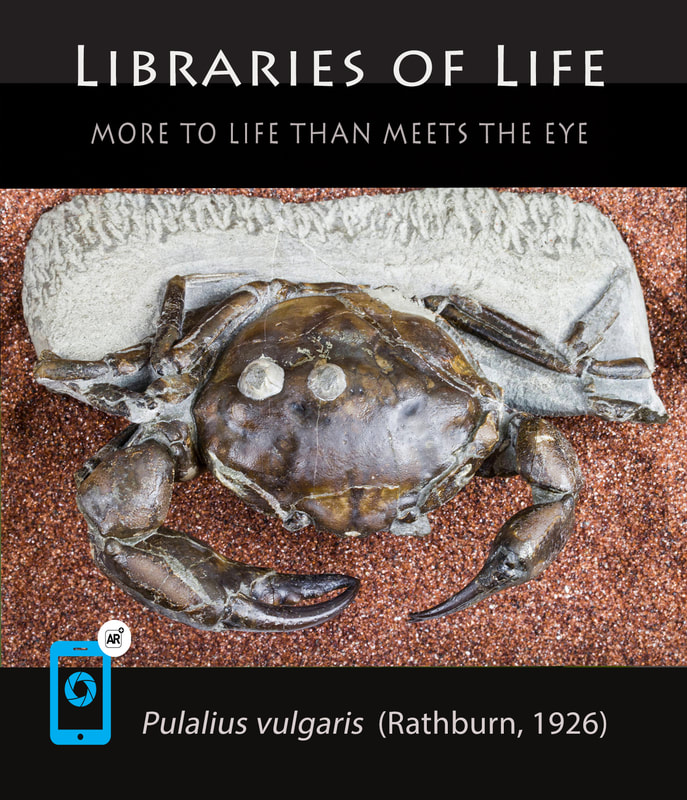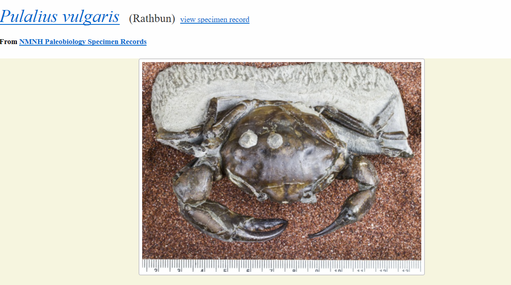FOSSIL Crab: Did you know?
|
Crabs are primarily aquatic invertebrates with an exoskeleton and jointed appendages. Many crabs are predators/scavengers and eat mollusks and other small living or dead animals. Though thousands of species of crabs live in today’s oceans, the entire family that includes this crab is extinct.
This crab may have used its claws to crush the shells of mollusks. Crabs living today crush and chip shells as well as prying them open in order to eat the organism inside the shell. The claws on this specimen include molariform teeth (see photo below), which may be fortified with minerals to increase their strength. Attached to the exoskeleton of this crab are two white barnacles. Barnacles are another type of arthropod that permanently attach itself to hard surfaces. The red circle in the image below shows two white barnacles attached to the exoskeleton of the crab.

These barnacles likely attached to the crab while it was still alive, but would not have harmed the crab. Barnacles are filter feeders and feed on microscopic organisms in the water. This crab was collected from the Lincoln Creek Formation of Washington state, though the exact environment it came from is a mystery. The completeness of this crab suggests it was buried quickly. When crabs are exposed on the surface after death, their claws and legs separate from the main carapace. This specimen is approximately 30 million years old. The completeness of the specimen allows scientists to learn about the anatomy of this extinct family (Tumidocarcinidae).
The iDigBio portal has at least 20 occurrences of this species of crab, including this specimen from the Smithsonian National Museum of Natural History. You can view hundreds of records of crab specimens on the iDigBio portal by clicking on the map below!

Credits: Project's Library of Life Lead: Erica Clites 3-D Model: Holly Little Page Images: Credit to James Di Loreto, Smithsonian Institution Acknowledgements: Adiel A. Klompmaker More information: http://epicctcn.org EPICC Vitual Field Experiences http://epiccvfe.berkeley.edu |



